
Watch Pacific artists and makers talk about their tapa practice
Watch interviews with the artists and makers of tapa talking about how they started tapa making, where they are with the practice now, and sharing what their work means to them.
Free museum entry for New Zealanders and people living in New Zealand
Open every day 10am-6pm
(except Christmas Day)
Free museum entry for New Zealanders and people living in New Zealand
For centuries, people across the Pacific have created beautiful and functional tapa cloth from the inner bark of a range of tropical trees. It’s known by many names across the Pacific – aute in Aotearoa, siapo in Sāmoa, ngatu in Tonga, masi in Fiji, hiapo in Niue, ‘ahu in Tahiti, and kapa in Hawaii. It’s used for mats, clothing, hats, paintings, story holders, and for Pacific peoples living in Aotearoa, observing the customs of their home islands keeps them connected to family, culture, and land.
Here, you can find out about how tapa has been used, read about wānanga with contemporary makers, and see the tools used to make tapa and the beautiful taonga in our collection.

Watch interviews with the artists and makers of tapa talking about how they started tapa making, where they are with the practice now, and sharing what their work means to them.
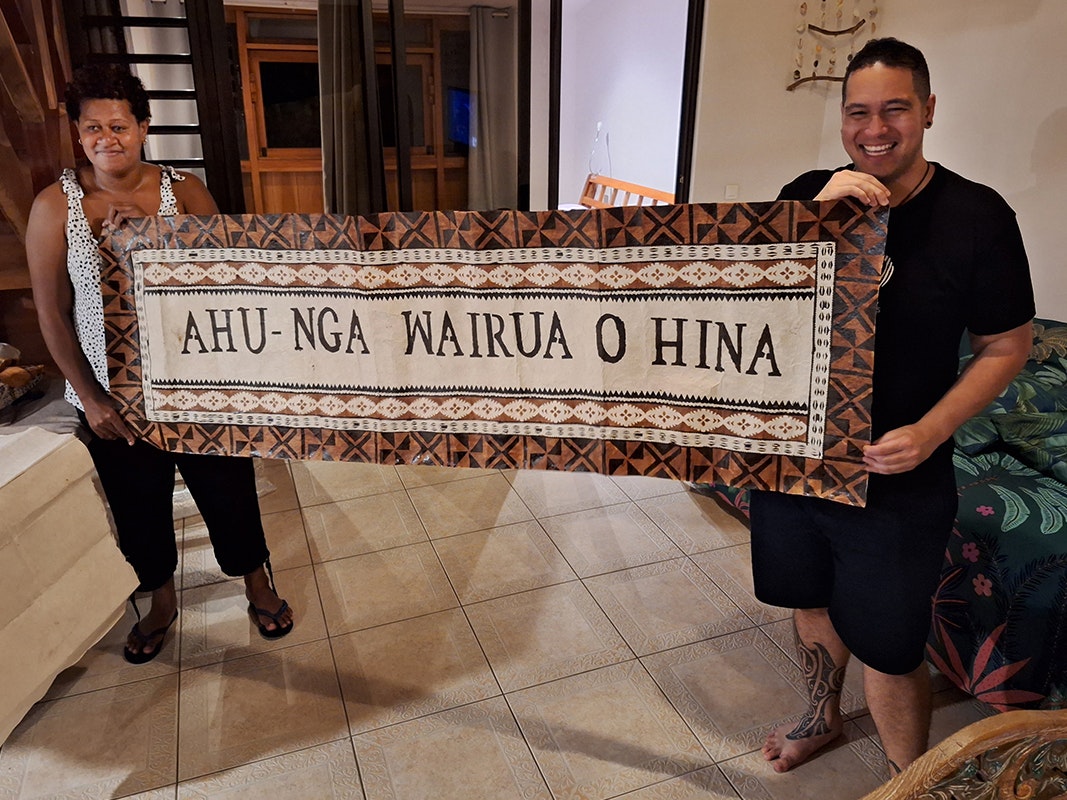
After acquiring a book of tapa samplers collected by Alexander Shaw that represents tapa-making practices from various islands in the Pacific, tapa makers, Te Papa curators, and our Senior Librarian, gathered together in Tahiti for a wānanga (workshop) to explore and respond to the samplers in the book.
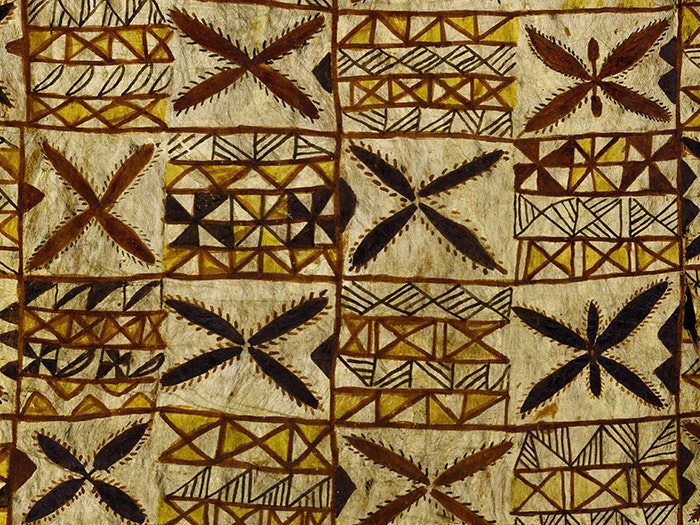
For centuries, people across the Pacific have created beautiful and functional tapa cloth from the inner bark of a range of tropical trees. They share common techniques of tapa-making, but produce cloth richly varied in both design and use.
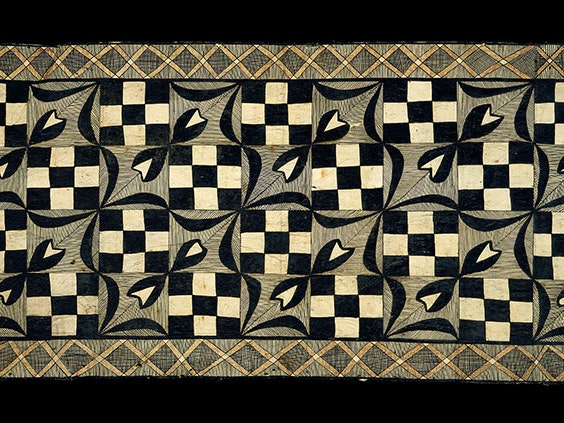
Learning more about the measina Sāmoa (Sāmoan taonga treasures) research assistant Alexander Gordon has been struct by the beauty of siapo (Sāmoan tapa) and talks about them here.
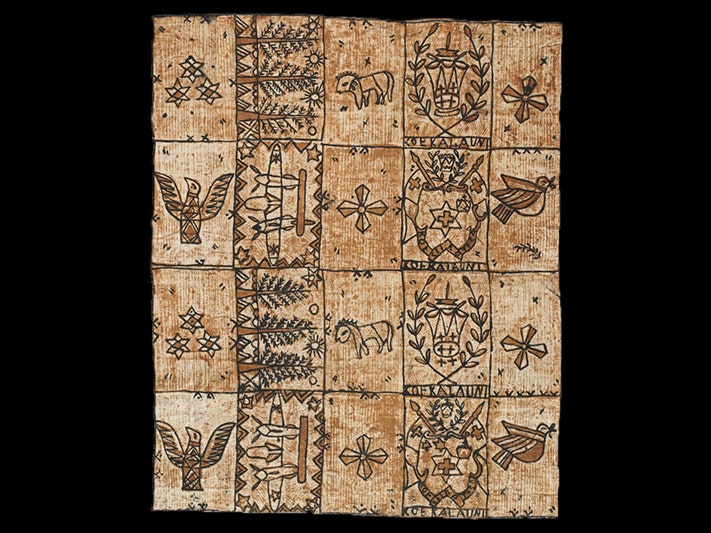
Ngatu is the Tongan name for tapa or decorated barkcloth, which is often hand-painted with dividing lines, numbers and sometimes small designs on the borders taken from the natural environment or associated with important people and events. Some of the events may be small and very local in nature, others reference bigger moments in time.
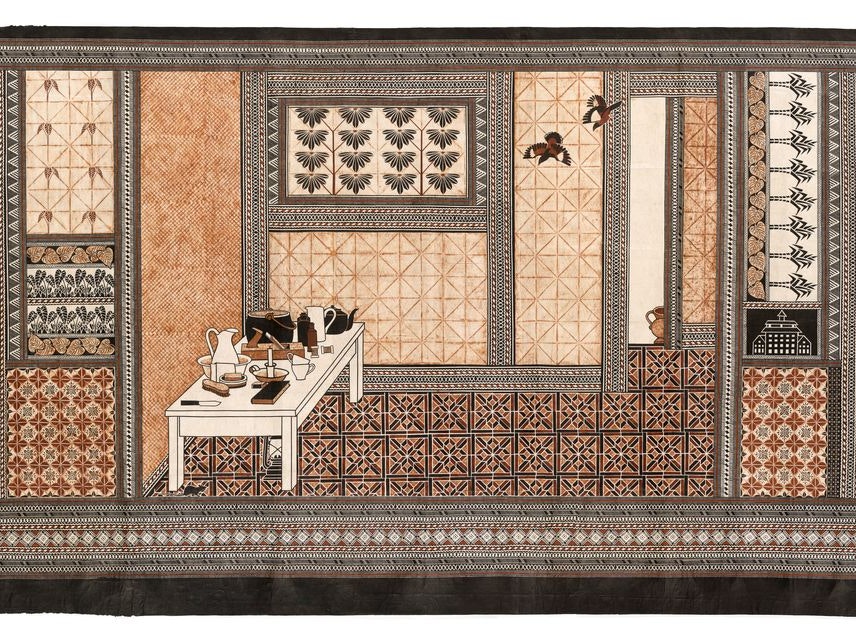
In 2019, Dame Robin White invited a small team from Te Papa to visit her on location in Lautoka Fiji as she completed That Vase, a masi (Fijian tapa) made with her collaborator Tamari Cabeikanacea.
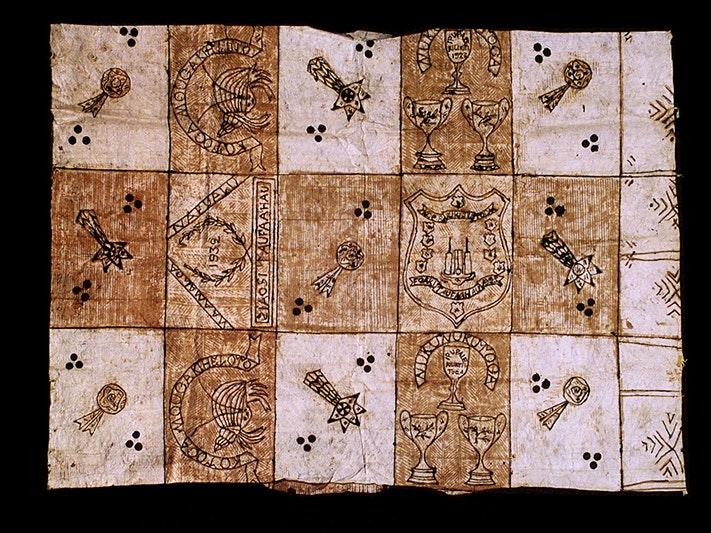
Ngatu are often decorated with motifs and patterns taken from the natural environment or associated with important people and events. Some of the events may be small and very local in nature, others reference bigger moments in time.
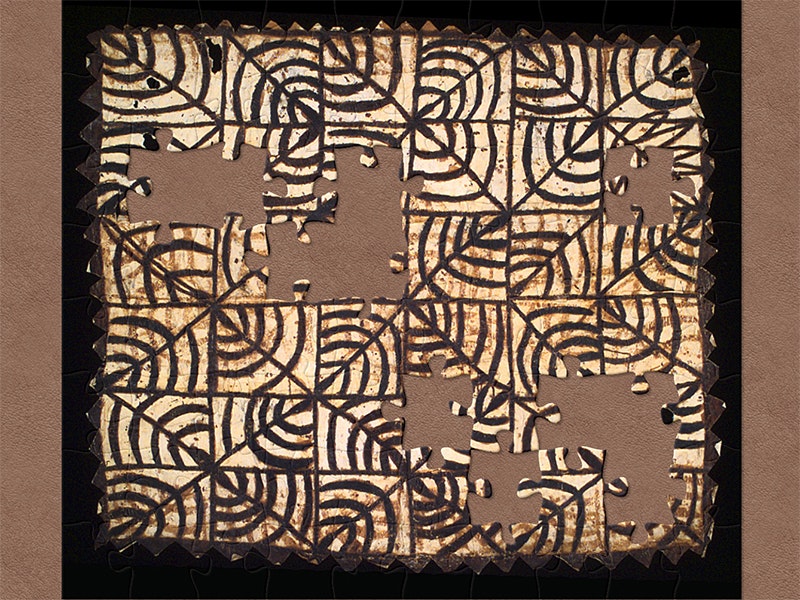
Siapo (tapa cloth), Sāmoa, maker unknown. Purchased 1916. Te Papa (FE001112)
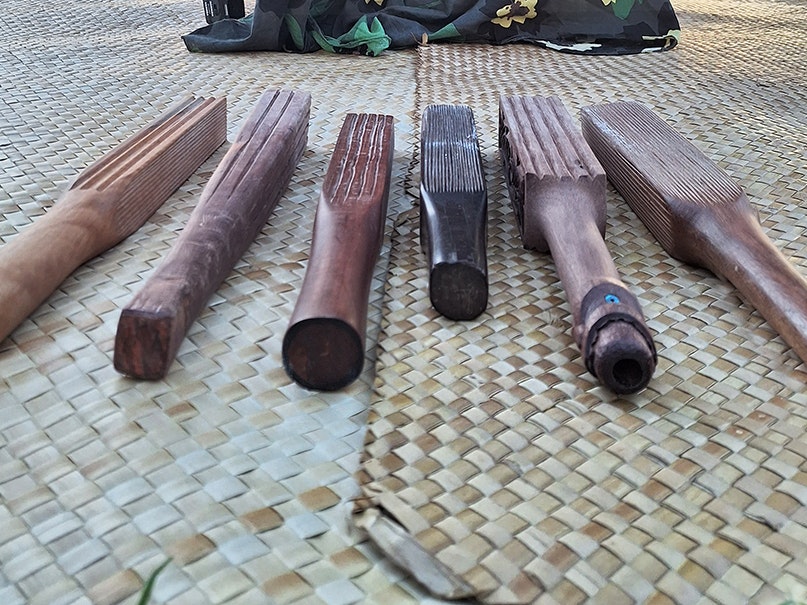
Katuali ike, ‘ike, hohoa, i‘e, raba, i‘e kuku – these are some of the words used to describe tapa beaters across the Pacific.
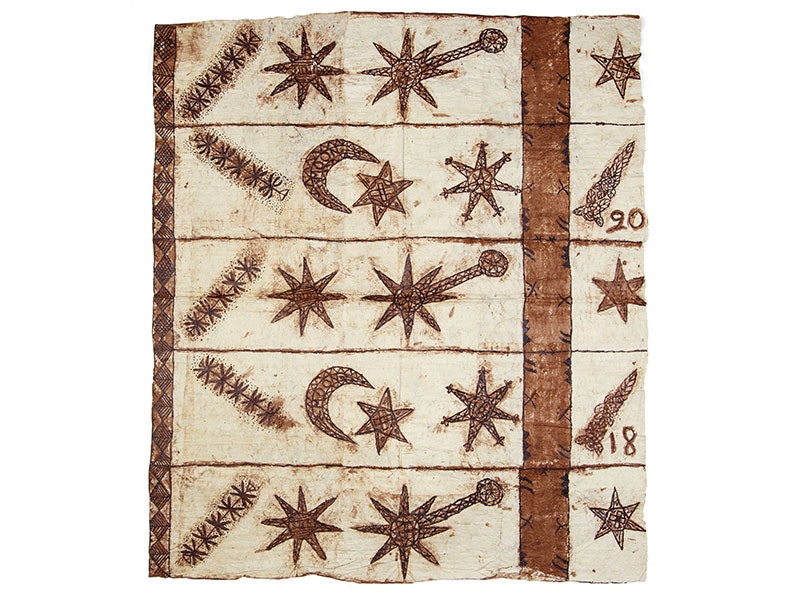
Ngatu (tapa cloth), about 1911, Tonga, maker unknown. CC BY-NC-ND 4.0. Te Papa (FE012487)
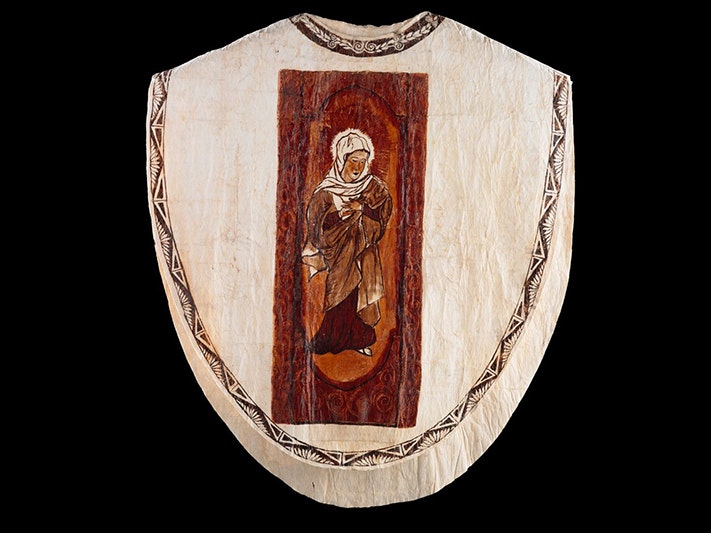
Fully-decorated tapa are often imported into the country, or made here with imported raw materials. Tapa cloth – both making and using it – is a way for Pacific people to keep connected to family, culture, and land., and these objects demonstrate how tapa-makers adapt to modern techniques and styles.
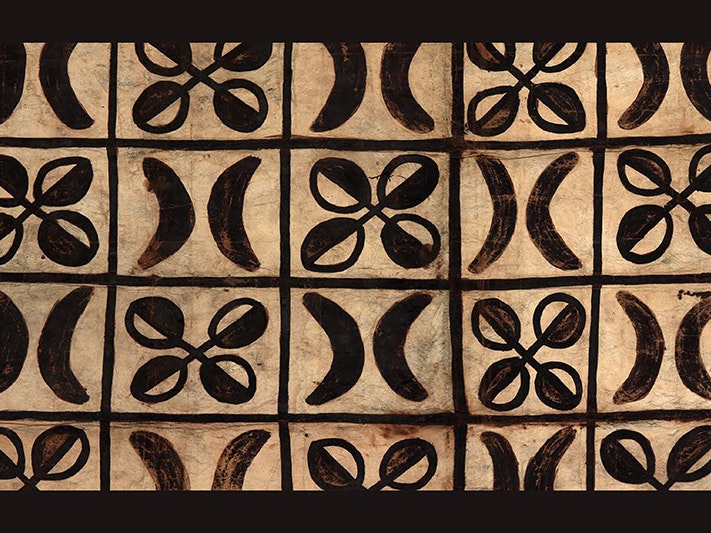
The exhibition Paperskin: the art of tapa cloth held at Te Papa between 19 June –12 September 2010 was a unique celebration of the breathtaking visual sophistication and richness of tapa.
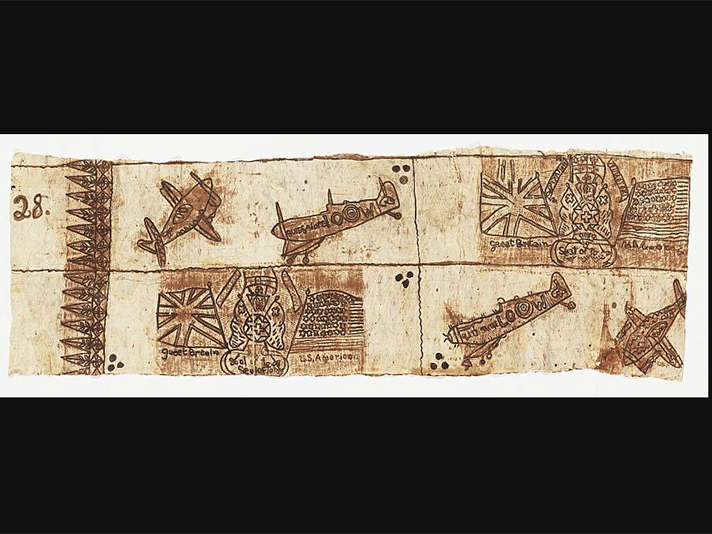
Conservator Textiles Anne Peranteau talks about the conservation treatment of an important Tongan ngatu hingoa, or barkcloth, that commemorates the WWII war effort of Queen Sālote Tupou III and the Tongan people.
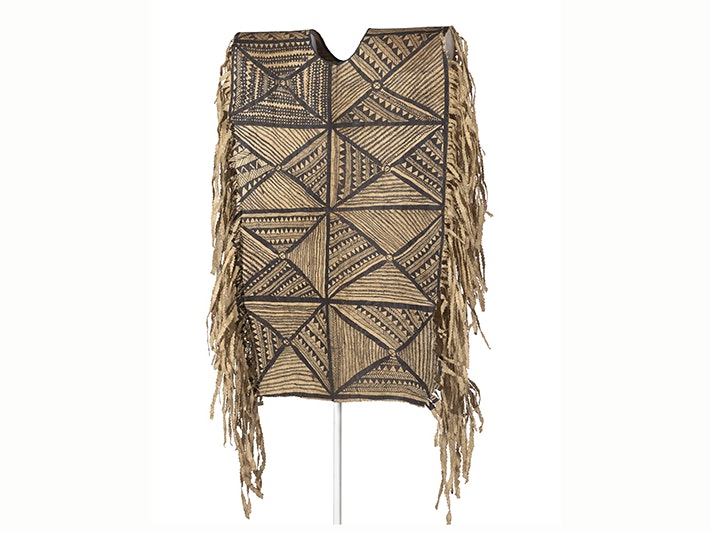
Eco fashion is nothing new in the Pacific Islands. For centuries they've been wearing tapa cloth, made from the beaten bark of trees. These days it's still popular for special occasions.

Siapo (tapa cloth), about 1917, Samoa, maker unknown. Gift of Thomas Trood, 1917. Te Papa (FE001423)
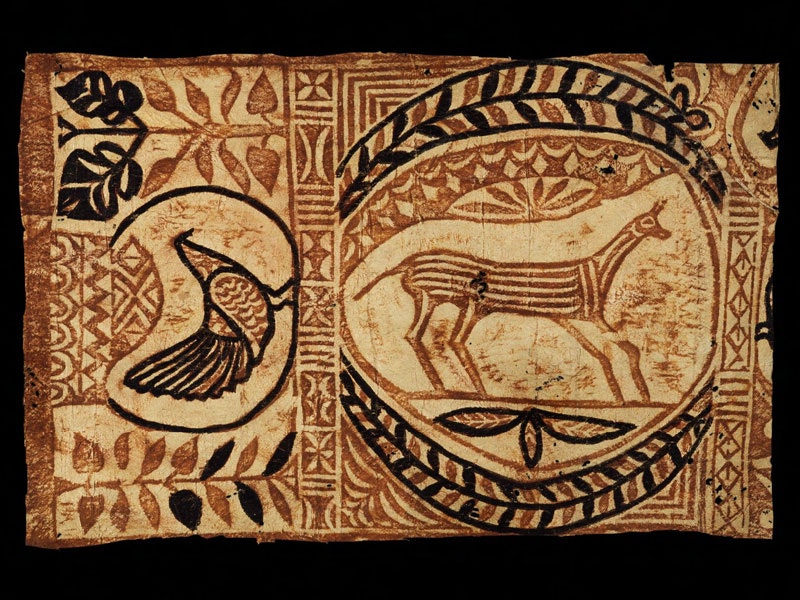
Explore tapa styles, stories, and tapa-related objects from peoples across the Pacific.
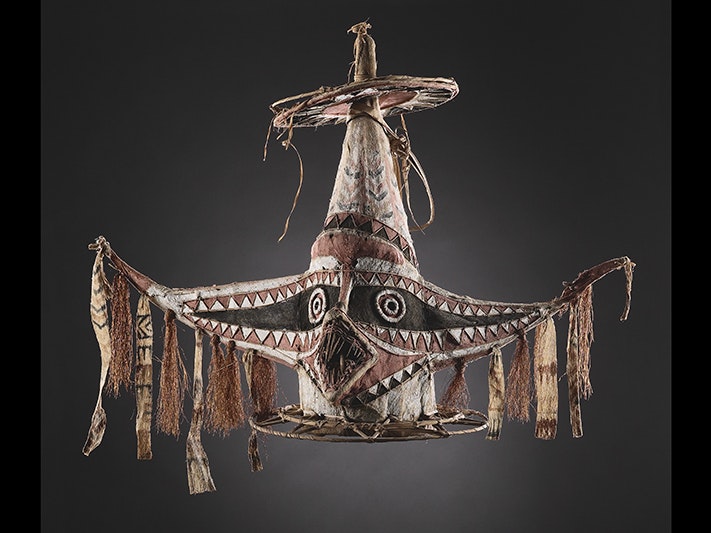
Tribes in Papua New Guinea used these Eharo masks for a ritual celebration that could last for years. Made of cane, tapa cloth, and painted with natural pigments, they were usually burnt after use, which makes the ones at Te Papa especially rare.
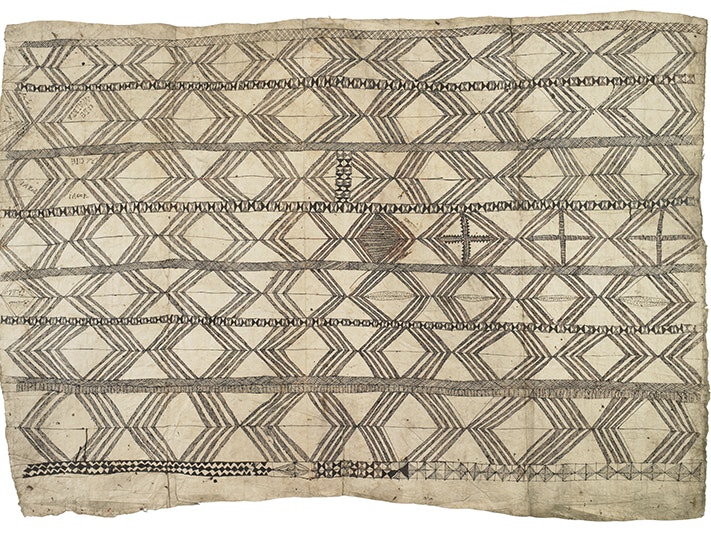
Hiapo is made from the bark of the paper mulberry tree. Little is known of pre-nineteenth-century forms of Niuean cloth, but we do know that in the 1830s, Sāmoan methods of making siapo or tapa barkcloth were introduced to Niue by Sāmoan missionaries.
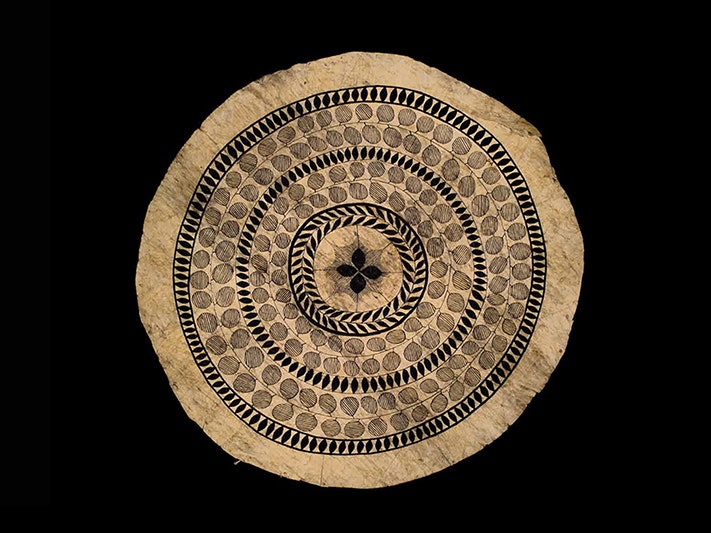
This video was produced by Tangata Pasifika to promote Te Papa’s 2010 exhibition Paperskin: The art of tapa cloth.
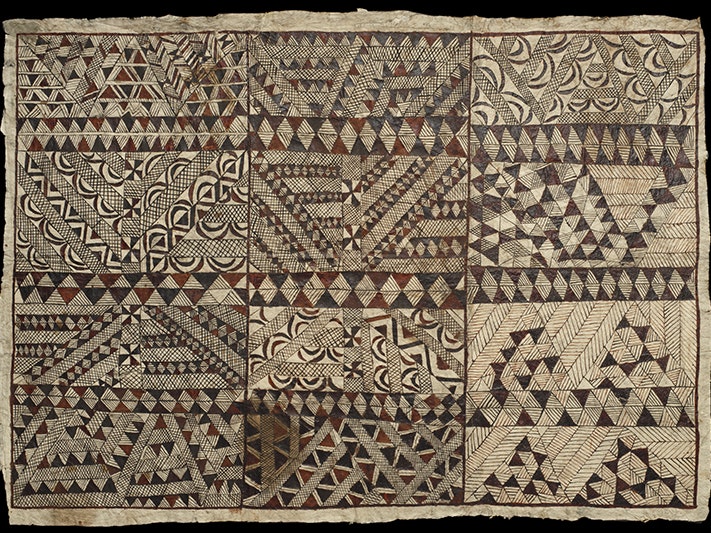
Fijian masi (tapa) has customarily been used for ceremonial occasions such as weddings or the conferring of a chiefly title. Explore tapa and tapa related objects from Fiji.
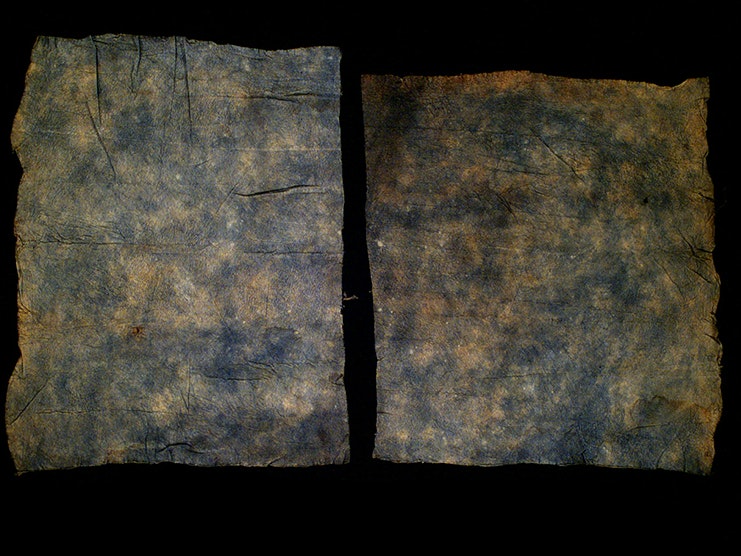
The very diverse island cultural groups that make up the Solomon Islands create different kinds of tapa, for different uses. Read about how tapa are made and used in the Solomon Islands.
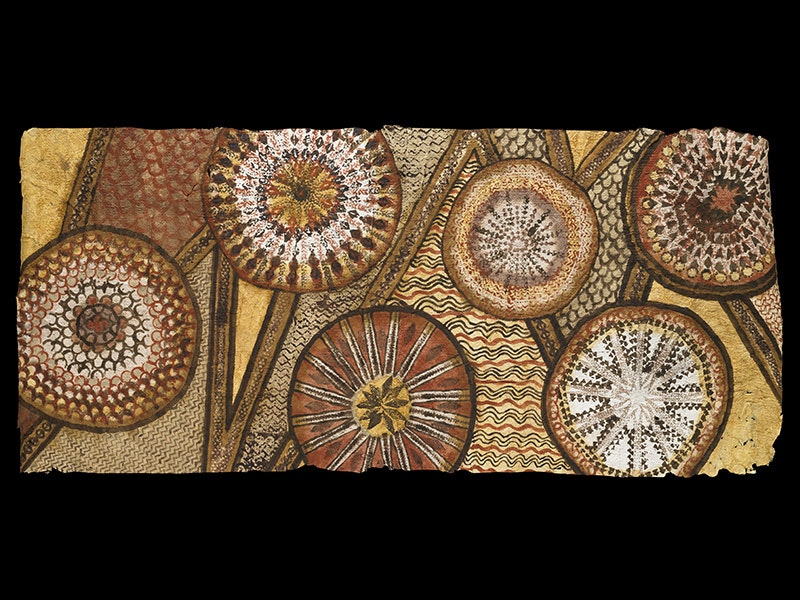
Research and publication of a book on the art of Pacific tapa cloth in the late 20th and early 21st centuries.
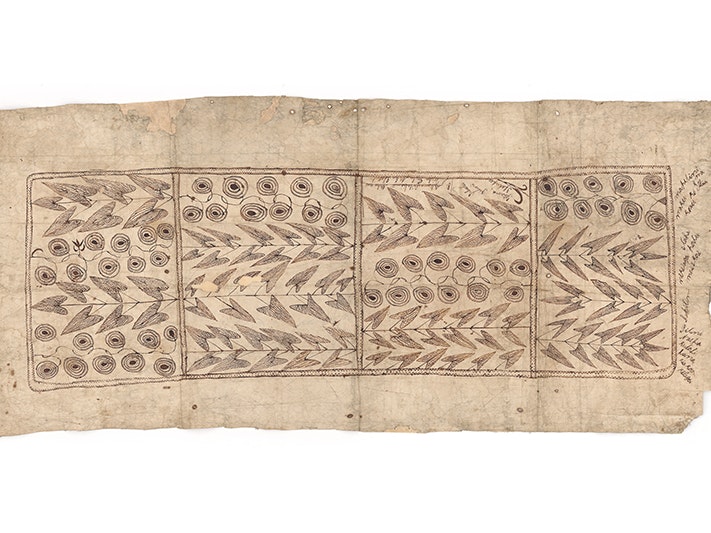
Here is our comprehensive list of terms related to tapa in the Pacific.